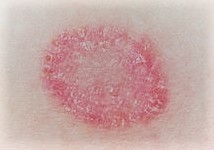Fungal Infections
Around the world, millions of individuals suffer from Fungal infections. These infections can range in severity from minor skin rashes to more dangerous systemic illnesses. Because they like warm, humid conditions, fungi can grow on the skin, nails, and internal organs, among other regions of the body.
It is essential to know the causes of fungal infections and how to prevent them to keep yourself healthy. In addition to discussing the main causes of fungal infections, this article offers doable preventative measures.
What Infections Caused By Fungi?
Fungi are microscopic creatures found in the environment. On human skin and other surfaces, certain fungi exist inertly, while others, given the right circumstances, can cause diseases. A fungus’s expansion or invasion of the body results in mycoses, another term for fungal infections. These infections can damage the scalp, nails, and skin. In extreme circumstances, they can even spread to internal organs, particularly in people with compromised immunity.
Fungal Infection Causes:
Numerous factors can lead to fungal infections. Fungi thrive in conditions that are warm and humid. Unventilated footwear, wet clothes, and sweaty skin are all conducive to the growth of fungi. Poor hygiene might also lead to fungal diseases. It is simpler for fungi to infect the skin when they are growing on dirty or damp surfaces.
In addition, fungal infections are more likely in people with compromised immune systems. Individuals who suffer from diabetes, cancer, or HIV may be at a higher risk of developing fungal overgrowth. Antibiotics and corticosteroids are two examples of drugs that might interfere with the body’s natural defenses, enabling fungus to spread unchecked.
Typical Fungal Infection Types:
There are different types of fungal infections. Athlete’s foot is a fungal infection of the feet and toes caused by the dermatophyte species. It causes redness, peeling, and itching of the skin. Ringworm is another frequent ailment that can harm the nails, scalp, and skin. Contrary to its name, ringworm is not a worm but rather a fungal infection.
Two prevalent locations for yeast infections, which are typically caused by Candida species, are the vaginal area and oral thrush. White spots, itching, and discomfort are the results of these infections. Onychomycosis, a type of nail infection, causes nail discoloration and thickness. Fungal infections have the potential to become systemic infections in extreme cases, which are more deadly and necessitate immediate medical attention.
Fungal Infection Symptoms:
The type and location of a fungal infection can induce a wide range of symptoms. Skin infections frequently result in scaling, itching, and redness. Cracks and sores may appear, or the affected areas may swell. Nail infections can cause thickening, discoloration, and brittleness. Scaly patches and hair loss can result from scalp infections.
Oral thrush causes discomfort and trouble swallowing, as well as white, creamy areas inside the mouth. Sensitivity, discharge, and itching are symptoms of vaginal yeast infections. Frequent treatment is necessary if symptoms such as fatigue, fever, and difficulty breathing develop and the infection spreads to internal organs.
Hazards Associated with Fungal Infections:
A number of factors raise the risk of developing fungal infections. Fungi can thrive in warm, humid climates where people live. Tight clothing can trap moisture against the skin and encourage the growth of fungi, especially in warm weather. Athletes and other people who sweat a lot or wear wet clothes a lot are more likely to have fungal infections.
Using common showers, locker rooms, or swimming pools increases the danger even more because fungi thrive in these environments. Furthermore, there is an increased risk of infection when sharing personal goods such as shoes or towels. Keeping up with proper hygiene habits lowers these hazards.
How to Avoid Fungal Infections:
Moderate lifestyle changes can prevent fungal infections. The initial line of protection is to keep the skin dry and clean. Dry off completely after bathing or showering, paying particular attention to areas where moisture can accumulate, such as the space between your toes and under your arms. The skin stays drier when one wears loose-fitting, breathable clothing made of natural materials like cotton.
Wear flip-flops or shower shoes when using locker rooms or communal showers to prevent coming into contact with fungi growing on damp surfaces. To reduce moisture, change your socks and underwear frequently, especially after perspiring. As personal objects like towels, razors, and shoes can house fungi, it is best to avoid sharing them.
Increasing Immune Function:
Stronger immune systems are better at fighting off fungal diseases. Immune function can be enhanced by eating a balanced diet, moving frequently, and obtaining adequate sleep. In order to lower their chance of fungal infections, patients with underlying medical disorders should work with their healthcare providers to manage their symptoms. Correctly managing health issues such as diabetes and closely monitoring pharmaceutical dosages helps prevent the growth of fungi.
Take care of Fungi Infections:
There are several ways to treat fungus-related infections. Two harmless skin infections that can be treated over-the-counter are ringworm and athlete’s foot. These conditions can be treated with antifungal lotions, powders, and sprays. For more serious infections, a doctor may prescribe oral antifungal medications. These treatments frequently eliminate the infection in a few weeks, while extended therapy may be required for some infections that are resistant to treatment.
Prescription-strength antifungal medications may be necessary for nail or scalp infections. Hospitalization and intravenous medicine are necessary to treat severe or systemic fungal infections that impact internal organs to eradicate the infection and avoid consequences.
Conclusion:
Fungal infections can be prevented and treated even if they are common. People can prevent infection by being aware of the causes and identifying the symptoms early. A healthy diet, regular exercise, and immune system stimulation can all help lower the chance of fungus overgrowth. People can safeguard themselves against fungal infections and preserve their general health by taking the appropriate preventive actions.
I hope you like it another one is related to Infections; link 1
